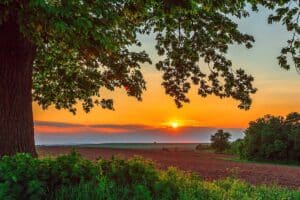That old golf course is getting to be an eyesore. Those once manicured fairways are getting a little rougher than the former rough. And forget about pulling out your putter; you’ll need a chipping wedge just to get the ball across the green.
Sound familiar?
All across the nation, golf courses are shutting down due to lack of demand. During the late 90s and early 2000s, developers across the country raced to construct as many golf course communities as they could even as the number of golfers leveled out. With a larger supply of courses but a stagnating demand, many golf operations found themselves without a customer base. As a result, for the first time in over 60 years, more golf courses shut down than were opened during the five-year period between 2005 and 2010. In 2010 alone, 46 courses opened compared to 107 that closed.
These days, municipalities and developers are facing a new challenge: what to do with all of the defunct courses. “Continuing to invest in golf courses that are not financially self-sustaining at the cost of other urban recreation is completely unjustifiable,” says Meredith Thomas, director of San Francisco’s Neighborhood Parks Council. As urban populations are continuing to rise, residents are finding it more difficult to find open space within a reasonable distance of where they work and live. In Los Angeles, for example, less than 15 percent of residents live within walking distance of a park or garden.
At the same time many golf courses are falling into disrepair, city officials, developers, and residents nationwide are working to tackle the challenge of how to protect open space in an economical and environmentally conscious way. For every 1,000 residents, Chicago only has 4.2 acres of open space. In Los Angeles, those same 1,000 must compete for 6.2 acres. And San Francisco, a city that prides itself on its livability and quality of life, offers only 6.6 acres.
When undertaken with a thoughtful eye toward the needs of the larger community and with a genuine respect for the natural environment, golf course repurposing can serve as an opportunity to create amenities that will serve the community long into the future. Rather than shortsightedly replicating conventional residential subdivisions, we encourage stakeholders to see the former courses as opportunities for innovative, sustainable development.
Because of the nature and logistics of golf course design, they are well-suited to become multi-use recreation and field sport facilities. In urban areas, where residents have limited access to open space, repurposed golf courses could include networks of hiking and biking trails, sports fields, disc golf courses, gardens, and public parks. They could also serve as public gathering places with such facilities as amphitheaters and farmer’s markets, both of which could add much-needed revenue to the local economy. In the winter, these areas could double as cross-country skiing facilities as well as hills for kids (and adults!) to go sledding. In areas where public space is perhaps not as threatened, repurposed golf courses could also include equestrian centers, networks of ATV trails, and shooting and hunting facilities, while water hazards could become high-quality fishing habitats. Local governments need not fear onerous management costs as precedents abound for contracting all or part of the operational responsibilities. Suitably-sized and located developments can both subsidize new facilities and benefit from their subsequently increased property values.
In addition to the recreational opportunities repurposed golf courses provide, they could also provide services to bolster the local economy. The establishment of a public farm could serve not only as a source of local food but could also provide educational opportunities for students and other community members. A municipal-scale composting facility could prevent huge amounts of waste from being landfilled while also adding to the municipality’s coffers through the sale of nutrient-rich compost, top soil and mulch. With stormwater management requirements becoming ever more stringent, repurposed golf courses could provide areas for rain gardens offering localized treatment options for adjacent developments and stormwater credits, while also potentially qualifying for conservation easements and wetland credits.
With sincere thought and care, communities across the country can repurpose golf courses as valuable amenities without straining the local budget, and in fact, can usually generate a profit, depending on the chosen programming. With the plethora of opportunities that defunct golf courses provide, these communities have incredible opportunities to enhance their livability for residents now and well into the future.
This content may not be used or reproduced in any manner whatsoever, in part or in whole, without written permission of LANDTHINK. Use of this content without permission is a violation of federal copyright law. The articles, posts, comments, opinions and information provided by LANDTHINK are for informational and research purposes only and DOES NOT substitute or coincide with the advice of an attorney, accountant, real estate broker or any other licensed real estate professional. LANDTHINK strongly advises visitors and readers to seek their own professional guidance and advice related to buying, investing in or selling real estate.









Very good article . This is a big issue in Kentucky and around the country and needs creative thinking to address.
Thanks so much, Mark! We absolutely agree. Defunct golf courses provide such an incredible opportunity for localities to thoughtfully preserve precious open space…it would be a shame to see that space go to waste.
Best news ever!
Golf courses are a total boring way of destroying otherwise primeland for agriculture ,conservation or urban development!
Thanks for article. Do you know of any golf course communities that re-purposed and are increasing their values?